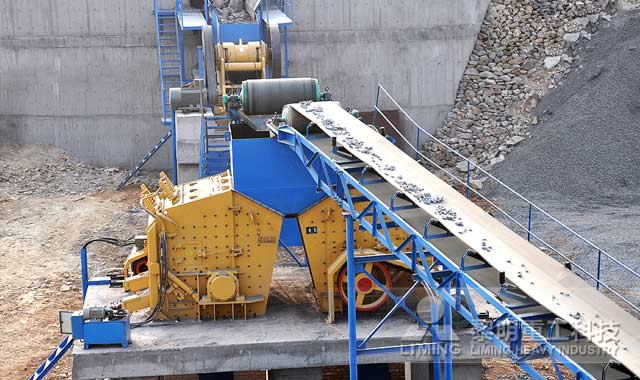Choosing a sand aggregate crusher involves considering various factors to ensure you select the right equipment for your specific needs. Here’s a comprehensive guide:

1. Type of Material
- Hardness and Abrasiveness: Determine the hardness and abrasiveness of the material you’ll be processing (e.g., granite, limestone). This helps in selecting the appropriate crusher type.
- Moisture Content: Consider whether the material is wet or dry, as this can affect crusher operation and efficiency.
2. Capacity Requirements
- Production Volume: Estimate the required production capacity in tons per hour or cubic meters per hour. This will dictate the size and type of crusher needed.
- Future Growth: Factor in potential future growth in demand to avoid quickly outgrowing the equipment.
3. Particle Size and Shape Requirements
- End Product Specifications: Define the desired output size distribution and shape of the final product. Different crushers produce varying shapes and sizes of aggregates.
4. Operational Considerations
- Operational Cost: Evaluate the total cost of ownership, including initial purchase price, maintenance costs, and energy consumption.
- Ease of Maintenance: Consider ease of access for maintenance tasks like liner changes, inspections, and component replacements.
- Operational Efficiency: Assess the crusher’s efficiency in terms of throughput and energy consumption.
5. Crusher Types
- Jaw Crushers: Ideal for primary crushing, offering a simple mechanism and high reduction ratios. Suitable for hard and abrasive materials.
- Impact Crushers: Suitable for secondary crushing. Provide high reduction ratios and can handle medium-hard to hard materials.
- Cone Crushers: Offer higher reduction ratios in secondary and tertiary crushing stages. Best for medium to very hard materials.
- Vertical Shaft Impact (VSI) Crushers: Produce cubical-shaped end products and are efficient for crushing softer or less abrasive materials.
6. Supplier Reputation and Support
- Supplier Reliability: Choose a reputable supplier with a proven track record in supplying crushers and providing after-sales support.
- Service and Spare Parts: Assess the supplier’s ability to provide timely support, spare parts availability, and technical assistance.
7. Site Conditions and Installation
- Site Constraints: Consider site-specific factors such as space limitations, electrical power availability, and foundation requirements.
- Installation Requirements: Determine if any special installation requirements are needed based on the crusher type and site conditions.
8. Comparative Analysis
- Compare Options: Conduct a detailed comparison of different crusher models based on the factors listed above to make an informed decision.
- Consult Experts: Seek advice from industry experts or consultants to ensure you choose the most suitable crusher for your application.
Choosing the right sand aggregate crusher involves a thorough assessment of material characteristics, production requirements, operational considerations, and supplier reliability. By carefully evaluating these factors and comparing available options, you can select a crusher that maximizes efficiency, meets your production goals, and operates cost-effectively over its lifecycle.
